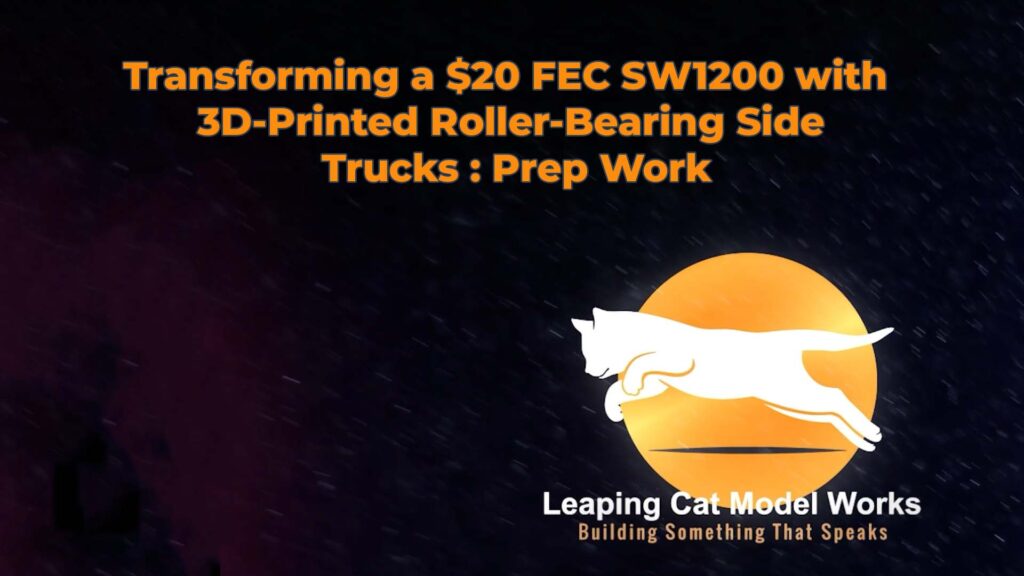Inspiration and Prototype Research
$20 Thrift Store Locomotive – Modernizing The SW1200 Roller Bearing Trucks
Table of Contents
Real Words, Just Polished with a Little Help
Note: I used AI to help turn the transcript of my latest video into this blog post. The words and ideas are mine—I just got a little help organizing them and cutting out the fluff for those of you that are in a rush and to help search engines find me.
Modernizing The Proto 2000 SW1200 with Roller Bearing Trucks
If you’ve just dipped your toes into resin printing and HO-scale upgrades, replacing the stock friction trucks on your SW1200 with roller bearing versions is a perfect first project. I’m Jamie from Leaping Cat Model Works, and in this post I’ll walk you through my go-to process—from support removal to final prep—so you can get that crisp, professional look without fancy gear or complicated steps.
Why Upgrade to Roller Bearing Trucks?
The original friction trucks that came on your SW1200 are faithful to the 1950s, but if your layout leans modern, they can look out of place. Roller bearing trucks not only give your locomotive a contemporary edge, they also run smoother and handle better on tight curves. I designed these trucks myself—drawing inspiration from decades of prototype photos—and I sell them on my site for anyone who wants a direct swap.
Step 1: Remove the Supports
Resin prints need supports to lift delicate parts away from the build plate, but trimming them off cleanly is key to a smooth finish:
- Use an angled nail clipper—the kind you find in the nail polish aisle at CVS or Walmart. Unlike standard cutters, these come to a fine point and let you trim right up against the model.
- Cut, don’t snap. Snapping can stress the resin and leave tiny cracks. Gently clip each support leg close to the truck body.
- Tweezer cleanup. After clipping, grab tweezers to lift away any remaining bits. You’ll be left with crisp lines instead of jagged stubs.
Step 2: Wet Sanding for a Smooth Finish
Dry sanding resin creates toxic dust—no thanks. Instead, wet-sand your trucks to get rid of the nibs without risking health:
- Prep. Fill a small dish with distilled water and have 400- and 800-grit wet/dry paper on hand.
- 400 grit first. Dip the paper, then lightly rub along the trimmed areas. This knocks down the bulk of the rough spots.
- 800 grit for touch-ups. Swap to 800 grit for a finer surface. Run your fingertip over the bottom to feel for any bumps you missed.
Step 3: Keep Your Workspace Tidy
Resin bits and sand slurry can get messy fast. Rather than lugging out the shop vacuum, I use a handheld battery-powered vacuum with a small collection cup. If you accidentally pick up a tiny part, you can retrieve it easily—no hunting through carpet fibers.
What’s Next? Painting Without an Airbrush
In the next post, I’ll show you how to achieve an airbrush-style finish with just a regular brush and a bit of black primer thinned down to an ink-like consistency. You’ll be amazed at how clean and professional your final result can look.

